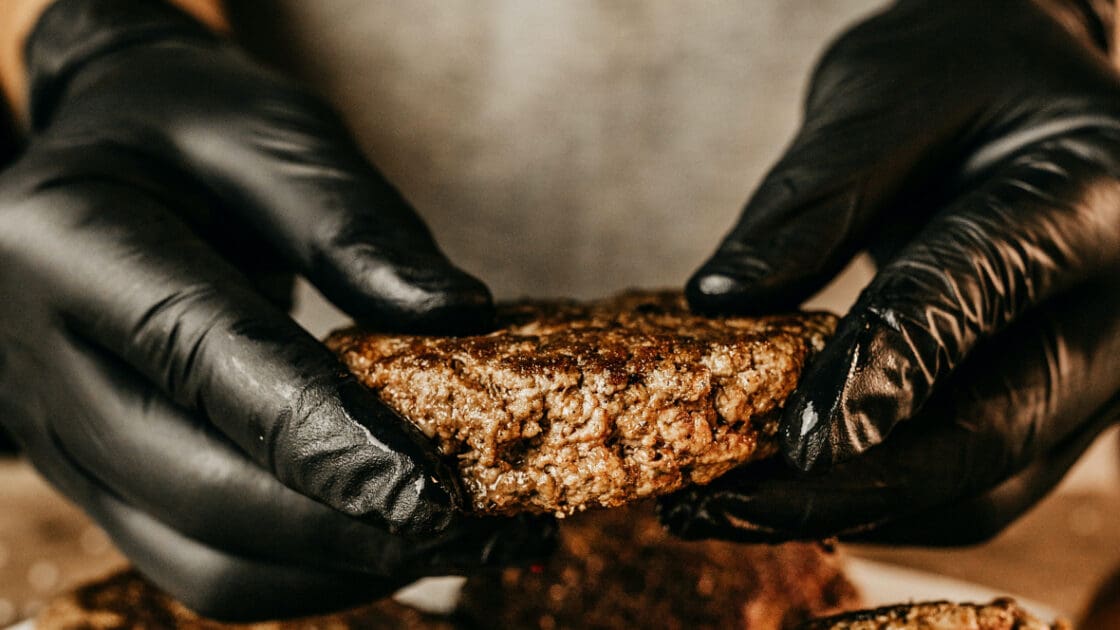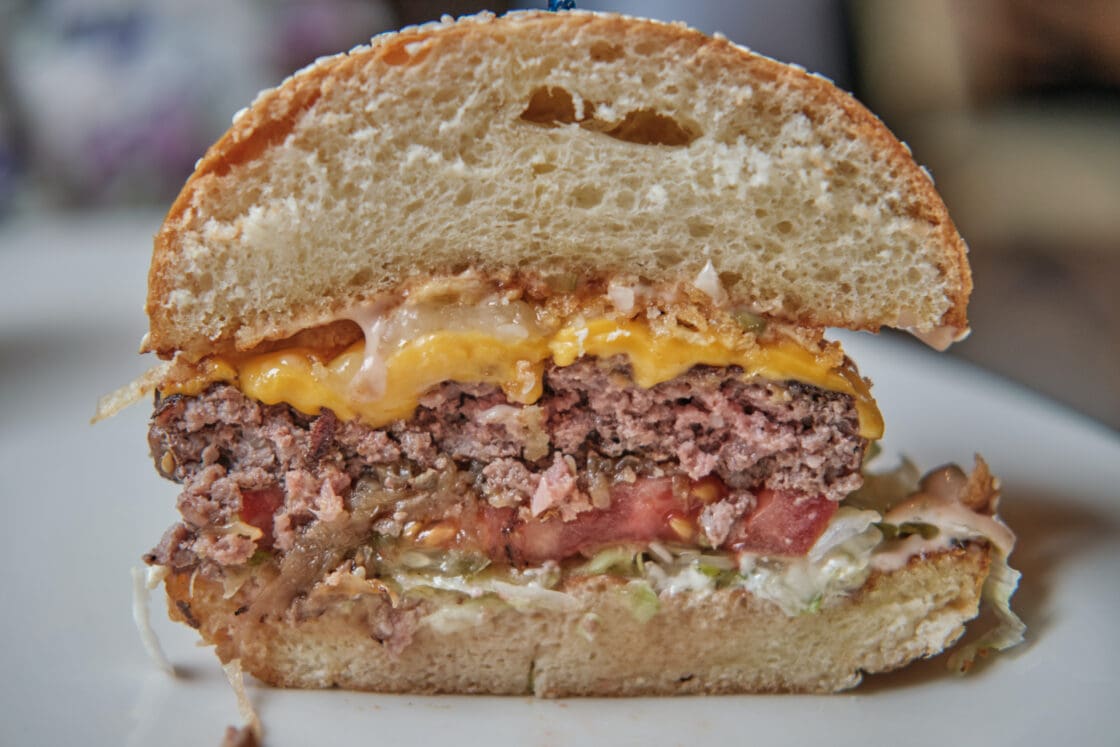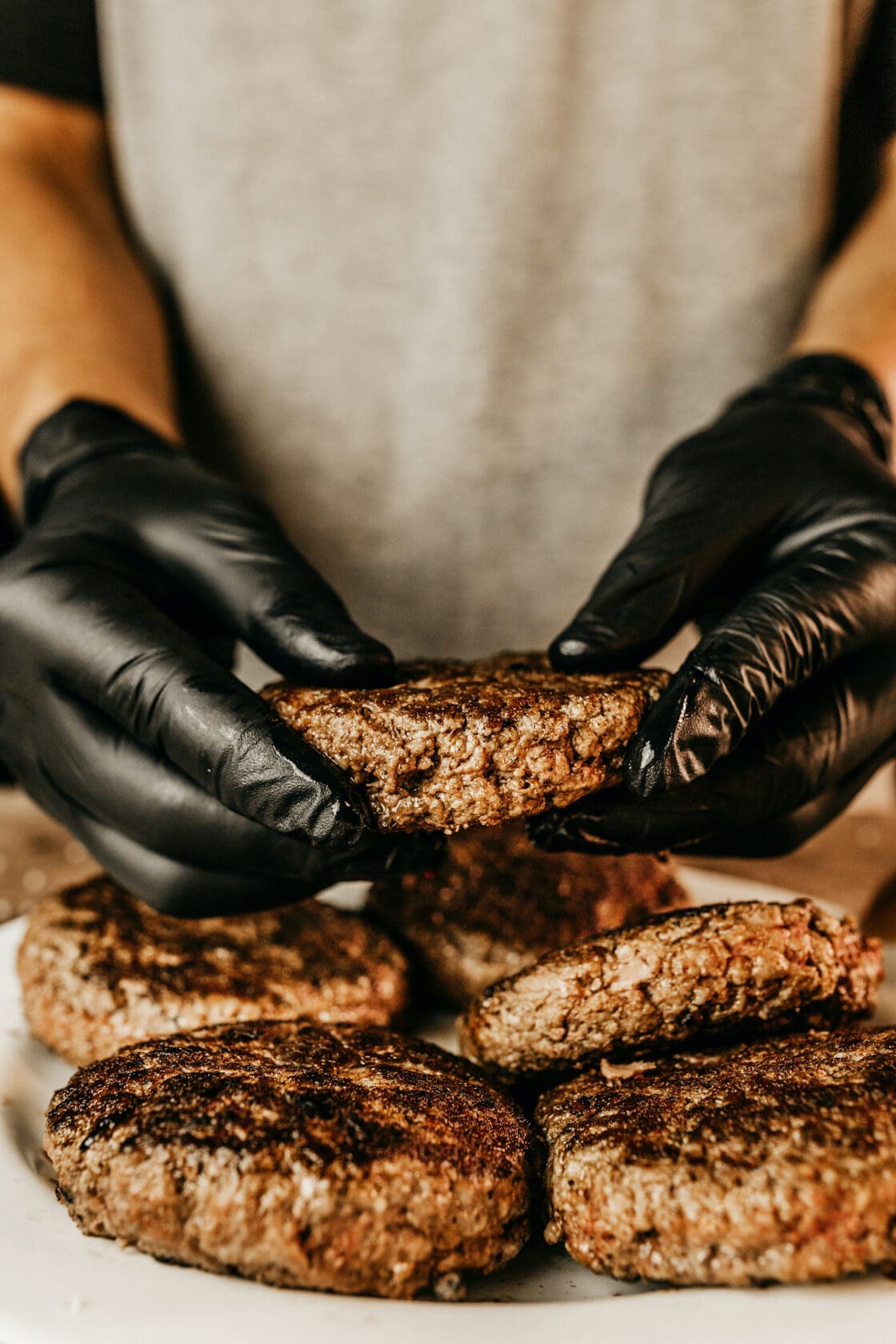Blended Meat Products Are on the Rise: Here’s What You Need to Know
Are they the answer to our food crisis?

Earlier this year, food-tech startup The Better Meat Co. announced $8.1 million in seed funding. The company, founded by longtime vegan animal rights activist Paul Shapiro, is supplying plant-based protein to traditional meat producers.
The concept is simple: take meat as we historically know it — beef, chicken, pork, fish, etc — and mix it with non-meat protein designed to taste like or complement the meat it’s mixed with.
But it’s not as simple as chopping up mushrooms, for example, and throwing them into your ground beef. The Better Meat Co. offers product lines for beef, pork, chicken, and fish, each of which is uniquely formulated for seamless integration, maintaining shape, size, texture, and, of course, the familiar taste of animal-based products.

Blended Meat: More Than Just a Trend
Manufacturers are embracing blended meat in a big way. Chicken giant Perdue is listed as one of Better Meat’s biggest clients. Tyson Foods, meanwhile, has launched its own range of blended products under the Raised and Rooted label. It includes nugget and burger blends.
Foodservice giant Sodexo has been blending meat products since 2016, and fast food chain Sonic launched a blended burger last year. Natural meat brand Applegate also launched a blended range. And one of the most recent brands to dive into the trend is Misfit Foods. Best known as a juice company, it launched a line of chicken sausages made up of 50 percent vegetables last year. It’s not shy about its motivation.
“We care the most about climate change,” Phil Wong, a co-founder of Misfit Foods, told Modern Farmer last January. “With the juices, we were focused on food waste, but here with this platform of blended products, we actually have a much bigger opportunity to fight that exact issue that we care most about by working on meat reduction.”
The James Beard Foundation got in on the action too, with its Blended Burger Project launched in 2015. The challenge asks restaurants to create burgers that are at least 25 percent mushrooms. (While most blends are 25 to 30 percent plants, some blends are as much as half plant-derived.) As a result of COVID, the 2020 Project challenged home cooks to do the same for a chance at a $10,000 prize. (Winners will be announced this fall.)
Two-time winner of the Blended Burger Project, chef and restaurateur Fiore Moletz, says blended burgers now make up 10 percent of his restaurant’s sales.
“The most important thing for me with the blend is that it’s sustainable and it’s healthy,” Moletz says. “We’re always pushing for the healthier and the more sustainable approach. The more we educate everyone, the better off we’ll be.”

Benefits of Blended Meat
Blended meat products offer a lower percentage of cholesterol and saturated fat, both linked to diet-related illnesses including the number one killer in the U.S.: heart disease. Reducing saturated fat and cholesterol also reduces the risks of developing high blood pressure, diabetes, cancer, and stroke. These blended products may even help reverse the conditions.
They also reduce the meat industry’s massive environmental impact. While that’s more difficult to quantify, reducing the overall meat mass of a meat product means fewer animals in the supply chain. That decreases greenhouse gas emissions and pressure on resources like fresh water, land, grazing crops, and energy in transport. The World Resources Institute’s recent estimates suggest that making every burger sold in the U.S. just 30 percent plant-based would conserve more than 80 billion gallons of water annually (that’s the water used by more than 2.6 million homes every year). It would also reduce agricultural land demands by an area larger than the entire state of Maryland, more than 14,000 square miles.
All without having to give up your favorite burger.
Sounds pretty perfect, right?

An Imperfect Blend?
But where blended meat is a problem-solver in concept, it’s complicated in actuality. It takes a booming category — plant-based protein — and mashes it into an ailing one. It’s a bit like using a smartphone to encourage people to go find a landline. Case in point: sales of vegan meat during the pandemic have skyrocketed. Some estimates put sales at up more than 140 percent since March for vegan behemoths like Beyond Meat and Impossible Foods. These spikes come as conventional meat sales are flat or down — some way, way, down.
That’s because even when blended with healthful vegetables, meat is inherently problematic. The health risks and environmental footprints associated with meat production are well-established, but COVID-19 also highlighted further issues with the industry. After all, nearly every single one of the recent deadly virus outbreaks (SARS, MERS, Ebola, COVID-19) was rooted in animal consumption.
Antibiotic-resistant “superbugs” are strongly linked to the meat industry, too. The overwhelming majority of antibiotic stocks are used to increase animal growth as well as fight the infections rampant in concentrated animal feeding operations. This leads to infections that don’t respond to even “last resort” antibiotics, as the World Health Organization warned nearly a decade ago in 2012.
“If current trends continue unabated, the future is easy to predict,” WHO’s Director-General Dr. Margaret Chan said at the time. “Some experts say we are moving back to the pre-antibiotic era. No. This will be a post-antibiotic era.”
The meat industry is tied to human rights violations as well, an issue also illuminated by the current pandemic. Meat processing facilities have been some of the biggest hotspots for COVID outbreaks. The nature of these facilities, which process thousands of animals an hour, force workers to stand “elbow to elbow” for entire shifts. Many of these workers in the U.S. are here illegally, paid less than minimum wage, and threatened with deportation or worse for speaking out about animal cruelty and worker rights violations.
A recent campaign helmed by Academy Award winning-actor Joaquin Phoenix highlighted the issues with the meat industry. The campaign, launched by the Animal Legal Defense Fund in July, set up a whistleblowing hotline for meat workers.
“Despite the animal agribusiness industry’s flagrant disregard for worker safety as COVID-19 ravages slaughterhouses, a surge of whistleblowers—under the constant threat of employer retaliation—are coming forward with information about the mass killing of animals and disposal practices that have severe environmental implications,” Phoenix said in a statement. “Whistleblowers are instrumental in helping animal protection organizations identify, investigate, document, and expose cruelty.”
The human health and environmental benefits of blended meat products are easy to justify, but animal cruelty is an indefensible element that can’t be worked out with anything other than a mass shift to vegan meat.

Plant-Based Demand
So why not just keep producing what is already in high demand — those “bleeding” vegan burgers like Beyond Meat and Impossible Foods? Isn’t that what consumers want?
Demand for vegan meat is unquestionably on the rise, but animal protein is still a booming industry, generating about $1 trillion in annual sales globally. Plant-based meat sales, impressive as they may be, are equal to less than one percent of all retail meat sales.
Humans are creatures of habit. We want what we want, especially in stressful times like the pandemic we currently find ourselves in. That doesn’t mean most people aren’t open to trying new things, but, that’s not always true when it comes to making changes to our diets. Overnight shifts can be disruptive. It takes time to acclimate to new tastes, textures, concepts.
But according to Better Meat, change is happening, and demand for blended products is growing. A 2019 survey found that nearly half of regular meat-eaters prefer a meat product blended with plant-based protein over one that’s solely meat.
That flexitarian approach is significant. While it doesn’t reduce greenhouse gas emissions nearly as much as going vegan does, a consistent commitment to a meat-reduced diet can see individual GHGs drop by as much as 15 percent. Individual health benefits will vary, but countless studies show decreasing meat consumption while increasing plant consumption is linked to numerous benefits, especially for heart health.
And while blended products do little in the meantime for animals being slaughtered today, animals of the future may benefit, too, if consumers use blended meat as a step toward fully plant-based options.
Which may just be the case if fast food menus are any indicator.
Burger King, McDonald’s, and KFC have all foregone the blended route and opted instead for fully vegan options. Meat-eating customers have embraced these items in full force, with lines out the door. That’s a buzz a blended burger has never achieved… And likely never will.
Related on Organic Authority
7 Ways to Add Creaminess to Any Recipe Without Dairy (Goodbye, Inflammation!)
Will Our Small Farms Survive the Pandemic?
How Vegans Are Taking Over the Meat Industry

